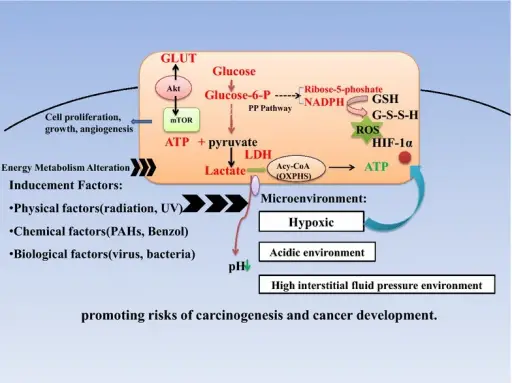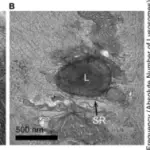Cellular metabolism is the set of chemical reactions that occur in living organisms in order to maintain life.
What is Cellular Metabolism?

Cellular Metabolism. Schematic of energy metabolism dysfunction promoting carcinogenic risks and cancer development. Different types of environmental factors (physical, chemical and biological factors) could act on cancer cells and the tumor microenvironment. Cancer cells usually show aerobic glycolysis and abnormal signal pathway regulations. Pentose phosphate pathway can be upregulated to increasing the amount of NADPH and ribose-5-phoshate, which are used for energy generation and DNA replication, as well as counteracting proportion of ROS for protecting cancer cells from oxidative stress. The inhibition of oxidative phosphorylation at the same time can result in the accumulation of lactate and the acid microenvironment. Moreover, several signal pathways, such as the Akt-mTOR signal pathway and the HIF signal pathway, are involved in the dysfunction of energy metabolism and can co-active a hypoxic tumor microenvironment. Energy metabolic dysfunction as a carcinogenic factor in cancer cells. Sun Y, Shi Z, Lian H, Cai P - Clinical and translational medicine (2016). Not Altered. CC.


